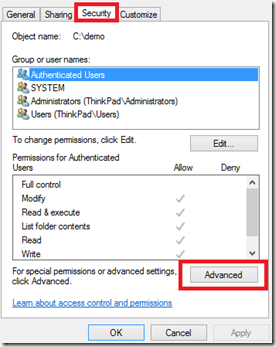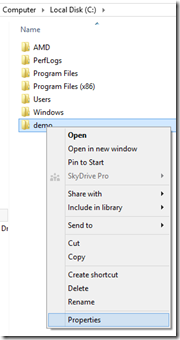After reading this you will be able to solve the error messages saying “Access Denied” on your Windows Computer System, even with elevated / administrator privilege. There are quite a few reasons due to which you can receive these type of error messages. Some of the related error circumstances are :
- You Re-installed or upgraded Windows to a new version & now you cannot open or modify a folder.
- You have two Administrator accounts on the same PC & you cannot access single / few / multiple files or folders
- You have a multi-boot operating system environment and you cannot access files from a specific drive or folder.
Some of the best ways to rectify this problem are:
- Take ownership of the folder:
- Right-click the folder that you want to take ownership of, and then click Properties.

- Click Edit. If you are prompted for an administrator password or confirmation, type the password or provide confirmation.
- Click the name of the person you want to give ownership to.
- Click OK.
- If you have upgraded from Windows XP to Vista or 7
- The location of Documents & Settings can now be found under Users folder .
- Another Solution can be to simply copy the files to a new location before trying to open them
- If your files are set as Read-only or Protected System Files
- Follow this Guide : Click here
- You are trying to read Encrypted Files
- Try going to Command Prompt
- Start menu –> type CMD –> Right Click –> Run as Administrator
- Navigate to the folder that you wish to read
- Type Cipher.exe /r
- Check your Drive for errors
- Sometimes a particular folder might not give you access if there is a file system error on the disk
- Right Click the Drive in Computer
- Go to Tools
- Check Now
- Check the Checkbox saying Automatically Fix File system errors
- Alternatively you can
- Run CHKDSK utility from the command prompt ( Run as Administrator )


Comments
One response to “Fix : File & Folder Access Denied error messages in Windows 7, Vista, XP”